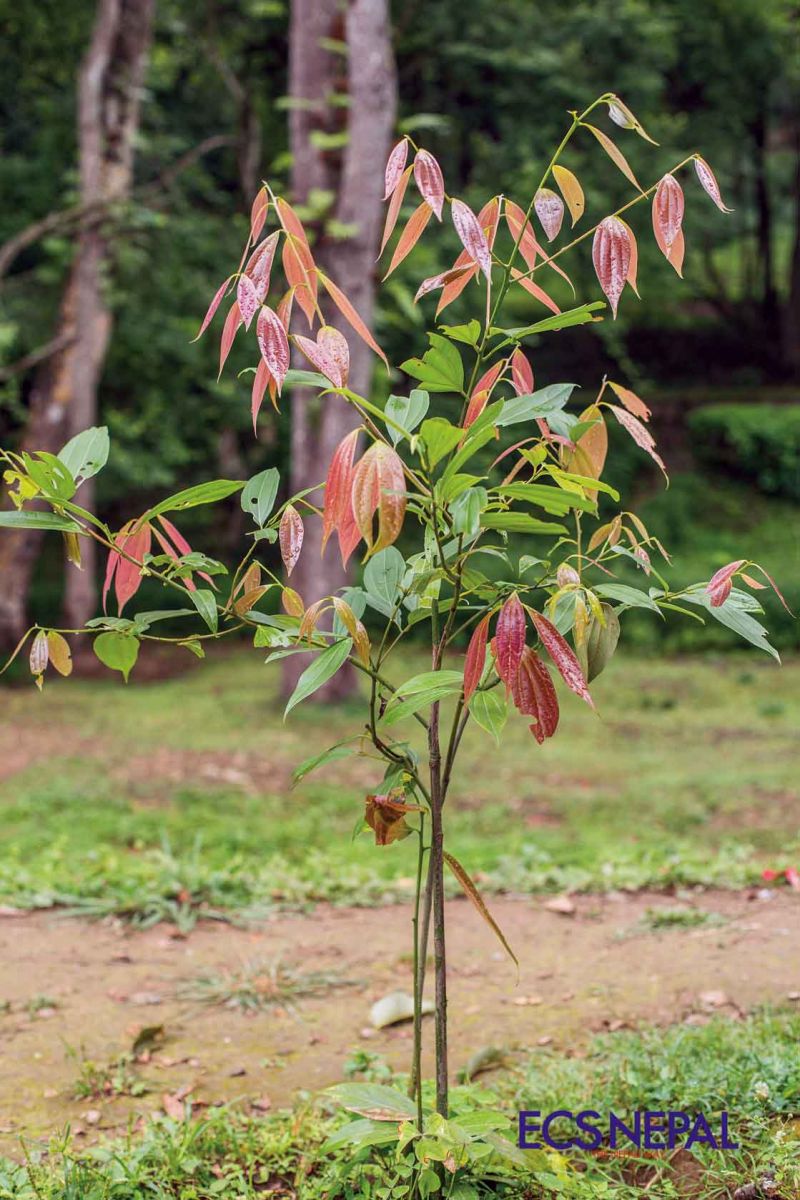Where Am I ?
Seven kilometers from the Ring Road, and you’re in Eden, flowers and trees and the unceasing chirping of birds, and serenity, tranquility, and peace.
It’s a plant species with some pretty intriguing names. The Tharus of Nepal’s lowlands call it ‘pagalbuti’ (pagalmeans mad and buti mean medicinal herb), because it is believed to cure madness and other mental afflictions. The more common Nepali name for it is sarpagandha. In English, it is called ‘Indian snakeroot’, as also ‘devil pepper’. In the world of science, its biological nomenclature is Rauvolfia serpentina. It’s used in many Ayurvedic formulations for many kinds of disorders (schizophrenia, hypertension, poisoning, and worm infestations, to name just a few). In fact, so popular is this species that it is in a depleted state now, and listed as endangered by the authorities. You want to see this plant and know more about it?
Well, that’s easy enough to do. Just drive down straight from Patan, through Lagankhel, cross Saatdobato, and carry on across Hattiban, Harisiddhi, Thaiba, and some other small places on the way, before reaching your destination some seven kilometers away from the Ring Road (hardly a half-hour, at the most). A destination that is the undisputed repository of the country’s substantial botanical riches. Here is where you’ll find trees, shrubs, flowering plants, orchids, cactuses, et al from the alpine region, the hills, and the lowlands of Nepal. Now, pause here for a moment, and just think about it—here’s where you will find botanical species growing across an ecological world ranging from 70 meters above sea level to 8,848 meters above sea level. Now, that’s what’s meant by ecological diversity!
It’s a lush spread of some 84 hectares with helpful signs all over informing you about the different sections. There’s a section that’s called the Japanese Garden, and it is without doubt one of the more serene parts of the entire site, what with burbling brooks and a small waterfall (the Japanese have a special fondness for water bodies; perhaps because they are so soothing to the senses), plenty of boulders strewn about, fallen tree trunks acting as bridges over sections of the brooks (besides a couple of traditional and rickety wooden bridges), and lots and lots of plants. The waterfall is where you’ll find yourself unable to resist taking a few selfies, and you won’t want for company, either, since there will always be some excited guys and giggling girls posing away to glory in front of the waterfall, while their friends click away.

The educational section is right near the entrance, and if you are like me—that is, the curious sort looking to gain some knowledge—it will take you quite a while to go through this part, because it’s divided into the various aforementioned ecological regions of the country. You may be disappointed at not being able to find some particular plants or trees as mentioned in the notices there, but I guess that’s because they have yet to grow. However, one interesting tree you’ll find here is the Elaeocarpussphaericus, more famously known as Rudraksha. This name could have rung a bell in your head, it is from where originates the religiously significant rudraksha beads that you see strung on garlands around the neck of many Hindus. Rudrakshas are said to be the tear drops of Lord Shiva, undoubtedly the most exotic god in the Hindu pantheon. Another point to be noted, some in the know refer to rudraksha as the king of herbal medicine due to its curative and preventive power over quite a few diseases.
Similarly, you may be interested to know, and see for yourself, the tree whose dried leaves are known as tejpatta, a very popular condiment that imparts such a distinct flavor to food, especially to curries, and particularly to meat curries. Its scientific name is Cinnamomumtamala. Information on it also includes the fact that this marvelous tree was first discovered by a famous Scottish surgeoncum naturalist, Dr. Francis Buchanan-Hamilton, in 1802. He is regarded as the father of Nepal botany.
You see what you get to learn when you visit this wonderful world of botany so near the capital? Even if you are not really the type to ooh and aah over a beautiful rose, this place is sure to arouse the nature lover in you. That’s because you get to spend a couple of tranquil hours amongst serene surroundings full of verdant greenery, with the constant and sweet chirping of lots of birds all around you. You’ll get quite a bit of exercise, too, because among the two major parts of the garden, one part is on a hill, and you got to do some climbing. Strolling around the place, beneath the shade of tall trees will also put some color back on your cheeks, that’s for sure. And, perhaps your appetite will also be aroused, in which case, there’s a nice enough restaurant serving all kinds of food at okay prices right beside the main gate.
There are also some stalls on the roadside outside, selling foodstuff and beverages, and delectable items made out of lapsi (considered to be endemic to Nepal and also known as Nepali hog plum). Although these delicacies are commonly found elsewhere in the valley, most people who come to this lovely place make it a point to buy those sold around here, since they are said to be extra special. Quite a reputation. So, when you go there, don’t forget! Real mouth watering stuff.
Okay, now it’s time for you to make a guess about the place I’m talking about. I’m sure many can. Credit that to the popularity of the place. As also, to my vivid description!









